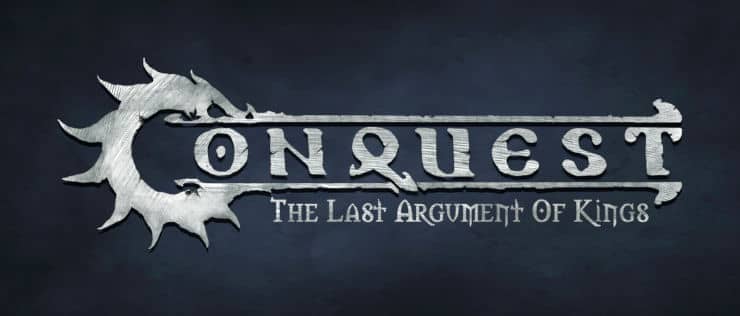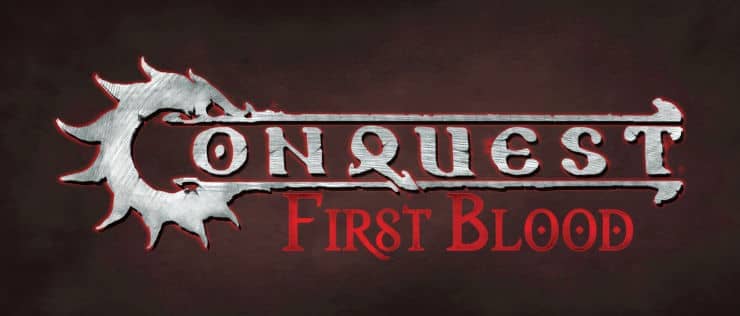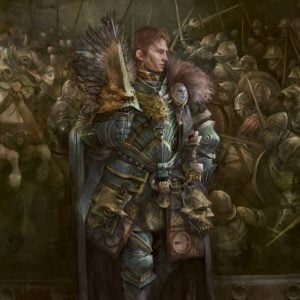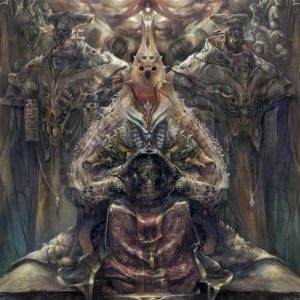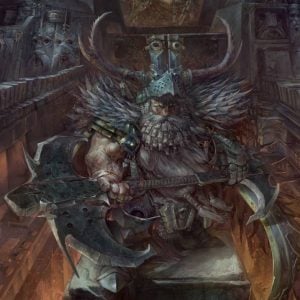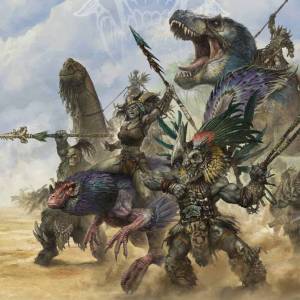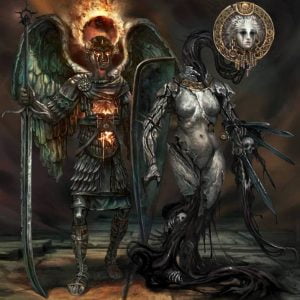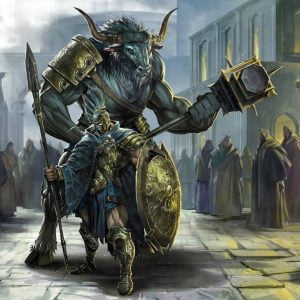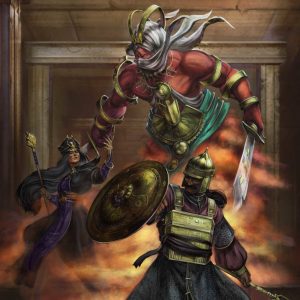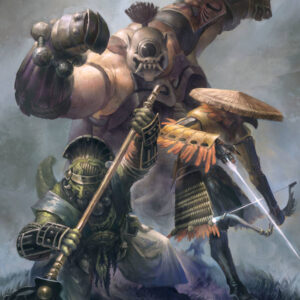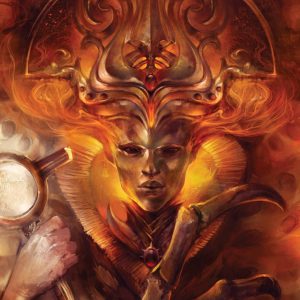
In the moments that followed the final act of the Fall and the unholy amalgam that was spawned, the Un-God’s maddened sentience reached out to all available vessels; and at the time, those vessels were plenty, for any still and soulless body would do. Countless dead, an empire of them in fact, would be filled with a mockery of life, a twisted vigor of Creation instilled with the emptiness of Death. These endless hosts were for the most part lacking purpose or guidance, the Will of the Un-God too spread and too scattered to offer either, and the life-ending power that existed in that moment of history was contained by its own numbers. But as decades and centuries passed, this explosion of un-life would settle. The new, unnatural primal force would meet its limitations and be reined in by them. The Un-God was shaped partly by faith, the same faith that had shaped Hazlia. Those sworn to him would forever remain vessels of his Will. And in the endless catacombs under Capitas, the Legions of the faithful were waiting with eternal patience.
It is believed that the adoption of the mummification practice began with Hazlia’s semi-primitive clergy during the times of the First Tribe. Inspired by the sealed bodies of Dweghom found in the Hold where Hazlia was discovered, the priests of the fledgling god would research ways in which their bodies could be preserved so that they could serve their god in the afterlife. It is perhaps only natural that the practice would be transferred to all members of the Dominion’s Legions. After all, the origin of the Legions was a group of warrior priests of the First Tribe, equipped by Hazlia’s ingenuity and dedicated to the expansion of His worship. The practice was continued, not simply as a mandate of tradition, but as a core element of the worship of Hazlia.
Chapels dedicated to mummification were built throughout the lands of the Dominion to serve the needs of those officials and warriors stationed there. In Capitas, however, an entire district, the Postern, would be covered by the scent of embalming fluid mixed with the aroma of ceremonial censers. In its center stood the Hall of Orcos, where the Rhadamanthi, priests of the Seer, would perform their gruesome task on the bodies of Legionnaires and the clergy. In its vast rooms, rows upon rows of stone slabs would host countless bodies throughout the centuries of the Old Dominion, its warehouses filled with the extracted organs of the faithful… as well as spare extremities, for the bodies of warriors would often need restoration before preservation.
With the exception of privately built and owned mausoleums by the wealthiest families, all of Hazlia’s faithful were transferred back to Capitas to be set to their final resting place: the Still Lake; a massive, natural complex of caves, filled with underground rivers and lakes, which would eventually become the single largest mausoleum in the history of mankind. Processions for the dead legionnaires, their bodies covered by a sheet and in full armor, would start from Hazlia’s tomb in the center of the Capitas, to the entrance of the Hall of Orcos, placed on a ceremonial boat. From the bowels of the Hall where the Still Lake awaited, they would be taken to their final resting place, tombs specially prepared and enhanced to keep the humidity at bay. It would not be long before the natural caves would be replaced by rows upon rows of these ornate tombs, forever encased in darkness and the soft sounds of water dripping in the still waters.
“To debate His genius is to debate eternity.” This dogmatic paradigm in the lips of Hazlia’s clergy was in the end spat with anger by those fleeing from the destruction of the Fall. Yet, as centuries have passed since the praise of their God’s forethought was filled with bitter irony, one cannot but wonder if this mortal sentiment was shortsighted and premature. Could the Legions awaiting in the Still Lake be part of Hazlia’s plan or, at the very least, a glimpse of his divine foresight?
Many of the few that know such things debate this. Some, respectful of the subtle influence of the Death part in the Un-God, remember their Ovidus: “They will bring you their lost, but know not why.” Even Hazlia could not escape the pull of a true Primordial, they claim. Others saw a simpler perhaps explanation: His Fall, they say, proves that Hazlia was neither all-powerful nor all-seeing and Chance, for better or worse, is her own Mistress. From the very beginning of his Dominion to his own maddened end, Hazlia had made plans within plans, weaved contingencies upon contingencies. What the original plan behind his schemes was, probably no mortal can truly grasp but it simply happened to serve him in his Un-life.

